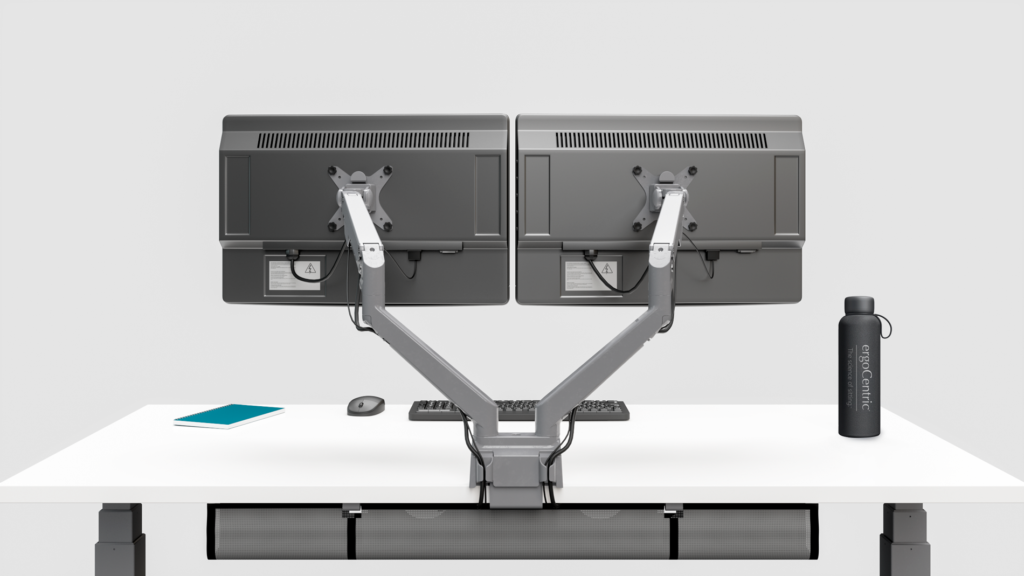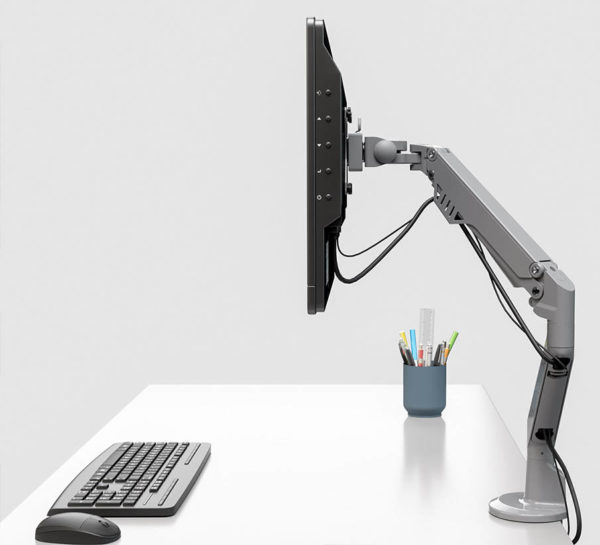20% off Demo Text
20% off Demo Text

The average office worker spends an inordinate amount of time in front of a computer screen. This usage likely increased if you started working from home during the pandemic, as you don’t get the natural breaks that are part of the day when working in the office. Collaboration, video calls and even socializing are all contributing to increased computer monitor usage. With all the time spent in front of screens, monitor arms are becoming a mainstream accessory in office environments.
A monitor arm supports and elevates a computer screen, laptop or tablet. It is a device which attaches to a work surface that raises the monitor to an ideal, personal viewing position. Monitor arms provide a range of motions in terms of height, depth, rotation and tilt.
With height adjustable desks increasing in popularity, monitor arms are a complementary accessory because they allow you to adjust the depth, height and angle of the screens as you switch postures. Over time, prolonged periods of monitor usage can cause severe eye strain, fatigue and even blurred vision. Monitor arms help alleviate these symptoms by allowing you to adjust the position of the screen to the optimal placement that works for you. Having a monitor arm at your workstation allows you to adjust the monitor closer when fonts are smaller, and further back when necessary. This helps when wearing corrective lenses with multiple strengths.
Having a monitor arm optimizes your available workspace. Monitor arm bases have a small foot print on the work surface. They are typically clamped to the back of the desk or through a mount, elevating the monitor(s) off of the desk, opening up the space beneath. This space can now be used to organize stationaries or cables more efficiently, creating a clean aesthetic which helps you focus your day-to-day tasks.
Many studies support the concept that using multiple screens enhance productivity. If you can’t adjust your monitors, you tend to adjust your posture to accommodate for this, often hunching your back or craning your neck. These awkward postures can cause discomfort and possibly lead to musculoskeletal disorders, time off work, and lost productivity. Introducing monitor arms into workstation design helps alleviate these issues and gives the user complete control of the configurations of the screens, whether it is landscape, portrait, side-by-side or on top of each other.
If you have a large and/ or heavy monitor, you’ll have to make sure the monitor arm has the weight capacity to support it.
The more flexible the arm is, the easier it will be to adjust to your desired position. The upCentric single and dual monitor arms tilt, pan and rotate monitors from landscape to portrait. They also have a convenient 180-degree lockout that prevents monitor arms from swinging back behind desk and into the wall.

VESA© defines standards for mounting interfaces on monitors and TVs by specifying the hole pattern, screw size, monitor weight and screen size. The advantages of the VESA mount standard are many, the most important of which is that it ensures the security of monitor mount onto the arm. The upCentric Monitor Arms offer effortless installation and removal with the quick release VESA mount.
The use of a monitor arm is indispensable. Whether you have a permanent workstation, work in a hoteling environment, or work at home, a high-quality monitor arm promotes healthy postures, good physical and mental comfort. The upCentric Single and Dual Monitor Arms come with a 10-year warranty and are a great investment for your or your employees’ well-being.